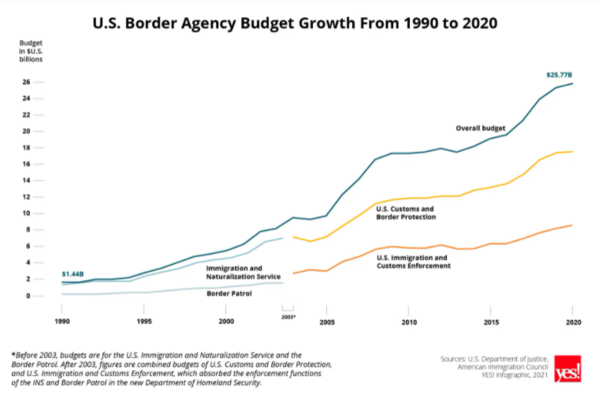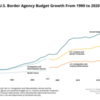At a time when migration across the U.S.’s southern border continues to grow and a new administration looks for different solutions, Todd Miller’s fourth book, Build Bridges, Not Walls: A Journey to a World Without Borders, seeks to reframe the issue. The book makes clear that our border “problem” is endemic, transcending whichever party is in power. But rather than pointing the finger at migrants or even individual decision-makers, Miller takes aim at the border apparatus itself: a relic of colonialism that divides nations, communities and families alike, and which may have outlived its usefulness.
When we look at the 21st century, you have problems of inequality that are just yawning gaps between, what, there are 2,000 billionaires that have more wealth than 4.6 billion people, right? The fact that people are going to get be on the move more than ever before due to climate change, those are the some of the things we have to look at. So the global border system is designed to keep this kind of world in place. And [it’s] a world also where, for example, U.S. companies can go to Mexico and get cheap labor, so there’s a whole labor component to it. And so my argument is this: This is a completely unsustainable world. But it’s getting more and more pressured by all these different changes and, for a world of justice, a world of equality, a world where we would respect all those values, the borders inhibit those forms of justice from happening. …
Winters: You mention the concept of “wall sickness” in the book. What is that, exactly?
Miller: Well, wall sickness came from the Berlin Wall, and from I believe psychiatry and psychology, from looking at how people experience psychologically living so close to the wall. The conclusions that were drawn were that there was a sort of narrowness, that people [experienced] increased anxiety, that people would have a sort of “dis-ease”—and they want to put the hyphen there—by being so close to a wall. …
They’re impediments that are put down, physical barriers, but they also have these profound psychological impacts on people in many different ways. And in the end, the conclusion is breaking down the walls is therapeutic. The prescription is to break down the wall to alleviate the wall sickness.
To read more of Chris Winters' article, please click here.



Comments (0)